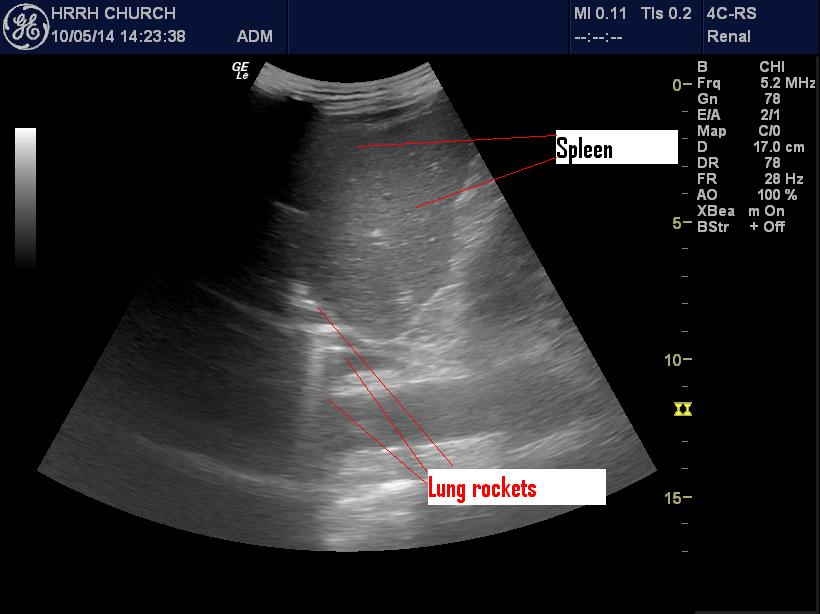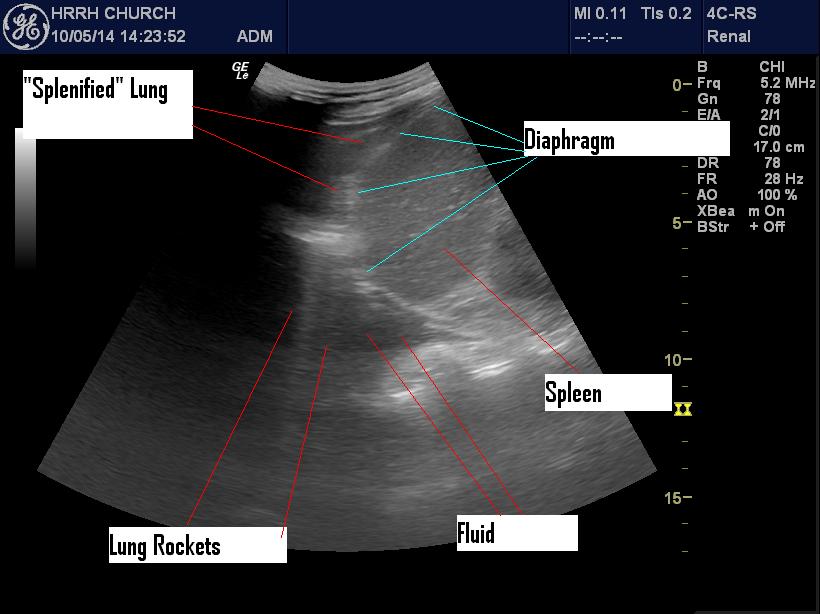Lung EDE
This patient had fallen on the bathtub and injured his left ribs. CXR 5 days ago showed a slight infiltrate in his LLL. He was sent back with pain and splinting.
POCUS showed the diaphragm all around the spleen (you shouldn’t be able to see it above 9 o’clock), with a pleural effusion. It looked like there was “spleen” on both sides of the diaphragm, so the lung was very oedematous (hepaticization or splenification?). There were also some nice lung rockets confirming lung fluid.
CT guided aspiration confirmed the above and 500 cc of fairly clear fluid was removed-no growth so far. There were no rib fractures.
Editor’s note: There is a lot going on in these images but as ED physicians adopt lung US into their practice I think it is becoming easier to sort out. Lloyd has been doing this stuff for a while now and generates a lot of great images for the blog. This is one of his older submissions that I am just getting around to posting. There are some good teaching points to review further.
You will notice that there is a spine sign confirming the presence of pleural effusion. The spine should not be seen cephalad to the diaphragm due to the lung causing scatter.
The B-line (or lung rocket) proves there is still some aerated lung in the area. The hepatization/splenification(?) may be due to atelectasis or contusion but there may also be an element of mirror artifact cephalad to the diaphragm.
And don’t forget that when a fluid-filled structure paralleling the spine shows up in the far field that this can be the IVC or aorta depending on where you have placed your probe so don’t call it an effusion!








